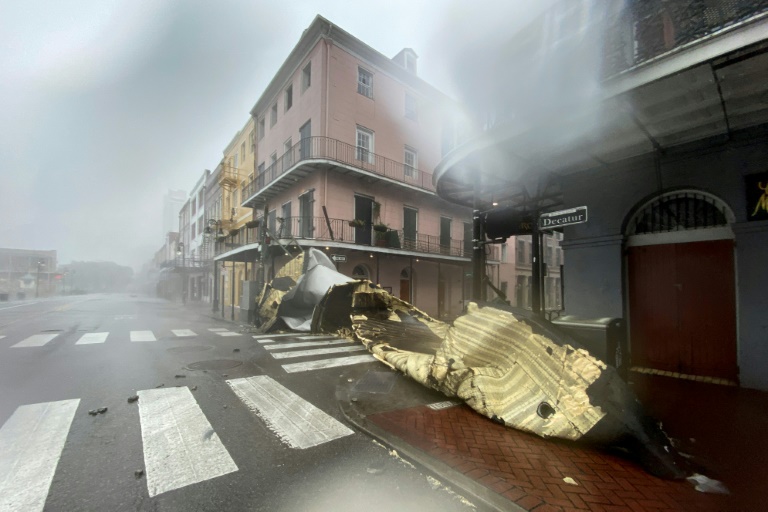Despair, anger in Louisiana in wake of Hurricane Ida
Seeing her ceiling caved in, her garage door smashed and the basketball hoop overturned in her yard, Lxchelle Arceneaux looked on with despair Monday at the devastation left behind by powerful Hurricane Ida, which swept through her town near New Orleans the night before.
“My children were terrified,” the 46-year-old told AFP in LaPlace, Louisiana, dressed all in blue and standing at the front door of her wrecked home. “I never heard wind like this before”.
Arceneaux, her husband and children took shelter in a bedroom after Ida — which blasted ashore with winds around 150 miles (240 kilometers) per hour — blew in a window that they had tried to barricade with wooden planks and duct tape.
“We started taking water inside from the roof. The fire alarm started ringing,” she said, her voice battling against the drone of emergency generators that were fired up after the town’s power went down.
The family tried to bale out some of the water, but did not have enough buckets.
Towards Sunday night, part of the ceiling sagged in, allowing the downpour into her living room, leaving moisture bubbles that were still visible Monday on her white wallpaper.
– Exasperation –
Arceneaux was angry with local authorities who, she said, had not given sufficient information on the course of the hurricane and the danger facing this city of 30,000, nestled on the east bank of the Mississippi River between New Orleans and the state capital Baton Rouge.
“We were advised of the hurricane but we didn’t know the eye of the storm had shifted closer to us,” she said, exasperation in her voice.
“We didn’t receive the flash flood warning until before the storm was already here,” she added.
The parish of St. John issued voluntary and non-mandatory evacuation orders ahead of the arrival of Hurricane Ida, which killed at least one person and knocked out electricity for over one million customers.
“I really wish I would have left and not experienced this,” she said.
Her neighbor, Carlo Barber, 22, was also surprised by the ferocity of Ida, which filled his house with almost five inches (12 centimeters) of water, scattered rooftiles all over his yard and destroyed his fence.
“When the place flooded, I took my truck and slept in the parking lot of Home Depot,” a nationwide DIY store, said the fresh-faced student.
“It was worst than what I expected,” he said. “When hurricane Isaac happened last year we didn’t get water in the house.”
“We were not prepared for Ida, but next time we will be,” Barber added.
– Submerged –
Many of LaPlace’s roads were still underwater on Monday, or blocked by downed trees, power lines and toppled utility poles.
“We rescued more than a hundred people,” said Jonathan Walker, a deputy with the St. John Parish sheriffs office and who was moving around town in the back of an army truck.
Among those rescued was Anderson Martinez, 17, who was taken out aboard a National Guard helicopter that landed in the parking lot of a shopping area with about 10 people on board, including three young children.
Martinez, together with his 14-year-old brother and their mother, had taken refuge in a hotel in the city when Ida hit. But when they wanted to leave their makeshift shelter after the storm, they found they were cut off by floodwater.
“The water was two meters deep,” he said, pushing a cart with all his belongings wrapped up in plastic bags. The teenager was desperately trying to reach his house, just a 10-minute drive away, to see if it was still standing.






